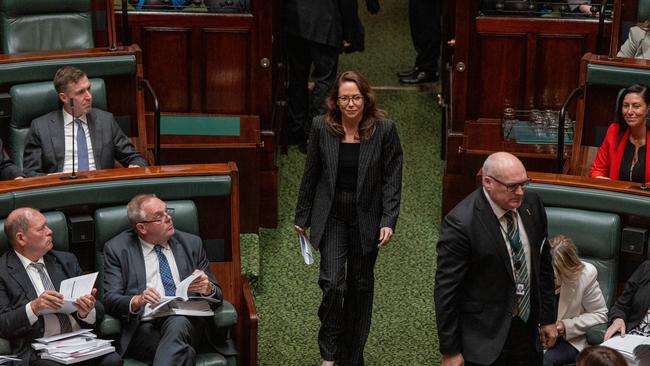Nation will pay for Victoria’s economic stagnation

This budget arrives despite explicit warnings from credit ratings agencies, which have urged the state to contain costs, identify savings and curb debt growth. Instead, the Andrews-Allan legacy continues unabated.
At a time when Victoria’s economy is forecast to grow by a modest 2 per cent, the government has budgeted for revenue and expense growth of 8.1 per cent and 7.0 per cent respectively. Such a misalignment signals a worrying shift, with the state government consuming an ever-larger share of the economy, a trend typically associated with economic stagnation.
These projections also rest on optimistic assumptions. The government expects economic growth to accelerate to 2.5 per cent, with household disposable income rising on the back of higher wages, falling inflation and a series of anticipated interest rate cuts. Whether this scenario materialises remains to be seen. But even under these best-case conditions, the underlying budget strategy appears flawed.
Perhaps the most striking concern is Victoria’s ballooning debt. Net debt is set to increase by $22bn next year, hitting $156bn, with a forecast rise to a staggering $194bn by 2029. This would be alarming under any circumstances, but it is particularly troubling given Victoria’s windfall $3.7bn GST distribution boost – a direct result of Australia’s deeply flawed system of horizontal fiscal equalisation.
In March, the Commonwealth Grants Commission announced it would recommend that Victoria would, for the first time, become a net recipient of GST, receiving $1.067 for every dollar of GST it contributes. Its share of national GST revenue will jump from 24.8 per cent to 27.5 per cent.
In essence, the more Victoria underperforms economically, the greater the financial support it receives. This is not just inefficient; it’s a perverse incentive structure that rewards fiscal recklessness while penalising states that manage their budgets prudently. The result is a distorted safety net that has masked the consequences of more than a decade of spendthrift governance.
Victoria is now staring down the very real possibility of a credit downgrade. Should that occur, the cost of borrowing will rise, placing even more strain on the budget. The state’s interest payments are already projected to reach $6.8bn next year, accounting for 6.5 per cent of total government expenditure. By 2029, that figure will rise to $10.6bn, 9.2 per cent of the budget, redirecting billions away from frontline services and critical infrastructure towards debt servicing.
In response, the government has chosen to raise a suite of taxes in an attempt to restore fiscal balance. But this approach is fraught with economic risk. Increased taxation reduces household spending power and raises costs for businesses. The predictable result is lower consumption, diminished investment and weakened job creation. Conditions that stifle economic growth and, paradoxically, can lead to lower overall tax revenue despite higher rates.
While non-Victorians may be tempted to watch these developments with a sense of schadenfreude, they would be mistaken. Australia’s dysfunctional fiscal federation ensures that no state is immune from another’s economic failings. Should Victoria’s finances collapse under the weight of its own mismanagement, the consequences will not stop at its borders. Because the commonwealth provides an implicit guarantee for state and territory borrowings, the burden will ultimately be shared by all Australians.
Dimitri Burshtein is a principle at Eminence Advisory.



Victoria, once a driving force in Australia’s national economy, is now veering alarmingly toward becoming a cautionary tale. The latest state budget, delivered by Treasurer Jaclyn Symes, offers little reassurance. On the contrary, it lays bare the state’s worsening financial trajectory. Rising expenditure, a widening tax burden and soaring debt are steering Victoria towards a fiscal precipice.